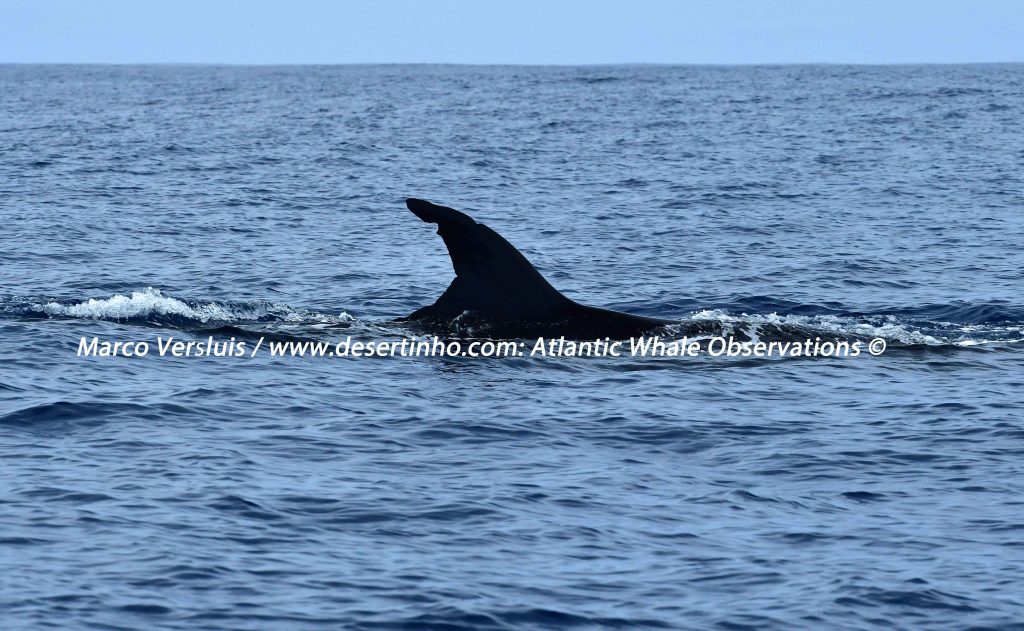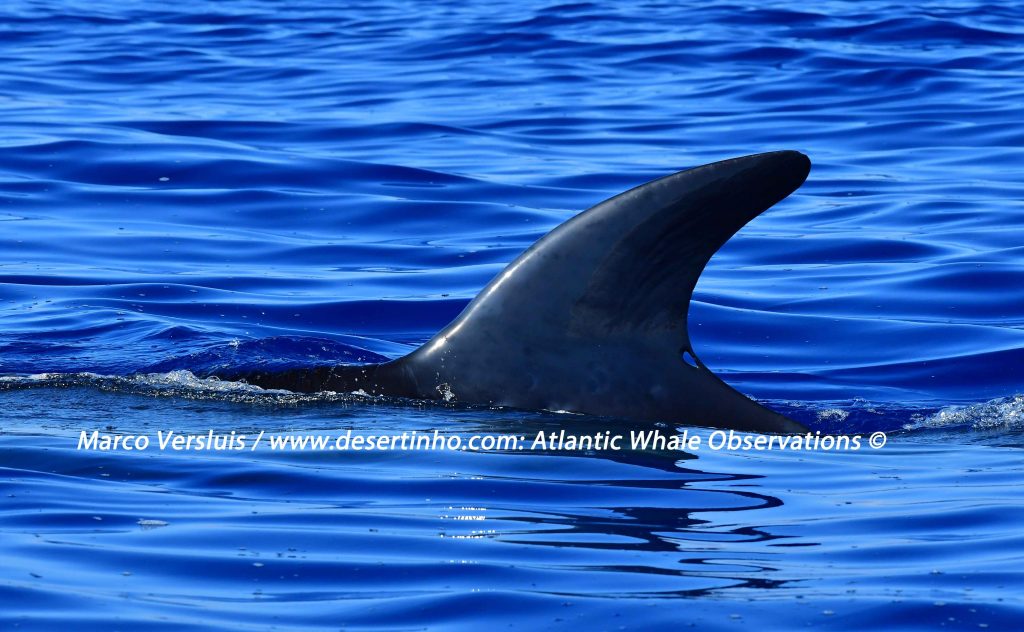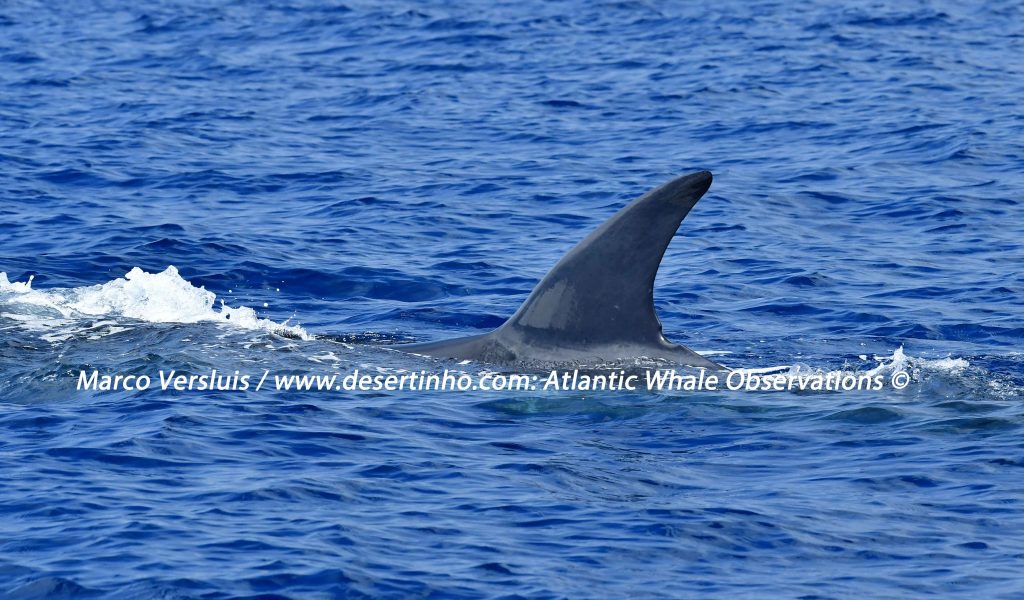Desertinho Atlantic Whale observations works together with several Sei whale (Balaenoptera borealis) Whale Photo-ID projects on the Atlantic Ocean since 2012. I’ am really proud to share my data and information together with other Sei Whale Photo-ID researchers worldwide. The last years I achieved just a few amazing Sei whale photo-ID matches on the Atlantic Ocean. It’s very hard to identify Sei whales because they don’t show their fluke at all. So these days we identify Sei whales by their specific markings on their body.
Desertinho’s Sei whale photo-ID project contributes to understand just a little bit more about Sei whale their migration routes, age, behaviour, and feeding patterns in the Atlantic. The photo you see below is about a Sei whale that has a real specific dorsal fin marking it’s namely cutted in a very special way. I observed him, or her, in 2017 near the Azores together with 3 other Sei whales during very bad weather conditions. Nice to mention is that just this baleen whale species is the sign for the Azores that the summer season is about to start. Finally, I’ am very proud that I could identify just this specific Sei whale and I hope to meet this Sei whale once again someday.
Desertinho Atlantic Whale observations werkt, sinds 2012, mee aan diverse internationale Noordse vinvis (Balaenoptera borealis) Walvis Foto-ID projecten. Ik ben er trots op dat wij onze data en informatie delen met diverse walvis onderzoekers wereldwijd. De afgelopen jaren heb ik helaas slechts een aantal Noordse vinvis Foto-ID matches kunnen maken. Elke waarnemingen van een Noordse vinvis levert mij, en anderen, veel waardevolle informatie op voor onderzoek naar hun migratie routes, leeftijd, gedrag en voeding patronen.
Het is bijzonder lastig om een Noordse vinvis te kunnen identificeren per individu. Normaal gesproken worden walvissen bij voorkeur herkent aan de “vingerafdruk” van hun staartvin maar in het geval van de Noordse vinvis is dit erg lastig omdat Noordse vinvissen maar zelden hun staartvin laten zien en dat ze relatief maar heel kort boven water komen. Maar met deze Noordse vinvis is het dit keer wel gelukt en dat komt omdat deze Noordse vinvis een heel bijzonder kenmerk heeft namelijk zijn sterk “beschadigde” rugvin. Ik observeerde deze Noordse vinvis in 2017 bij de Azoren samen met 3 anderen Noordse vinvissen. Zodra deze balein walvissen in de Atlantische Ocean bij de Azoren arriveren is dat het teken dat de zomer dan ook echt begonnen is!


